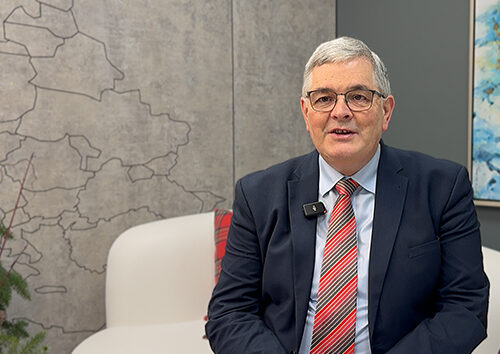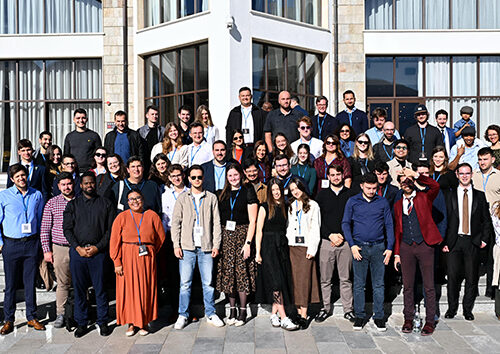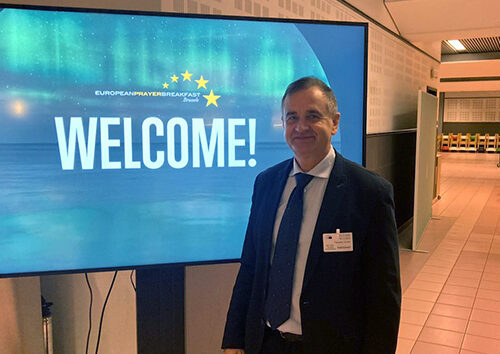3 February 2016 | Binfield, UK [Kirsty Watkins] Sabbath, 6 February will mark the 70th anniversary of Newbold College of Higher Education’s relocation from its previous campus in Warwickshire to its current home in Binfield, Berkshire.
The date also coincides with the annual offering for Newbold which this year will support the College’s iconic Moor Close building and gardens. As locations that many students and graduates hold dear it is a fitting project to commemorate the anniversary.
Established in 1901 as what Pastor N. H. Knight of the British Union described in the 22 February 1946 issue of the British Advent Messenger as a “Training School for Gospel Workers”, the institution first opened its doors as Duncombe Hall College, in Holloway, North London, on 6 January 1902. It relocated to Stanborough Park, Watford, Hertfordshire, in 1907 where it was known as Stanborough Park Missionary College and later Stanborough Missionary College (1921), and Stanborough College (1923).

In 1941 the Newbold Revel campus was commandeered by the Royal Air Force. The College found temporary quarters at Packwood Haugh, south of Birmingham, to which students and staff relocated in what Pastor Knight describes as a “hurried exodus…through a foot of snow” to the College’s “temporary” premises (British Advent Messenger, 1946). It was intended that this location be used for a year or two, yet it would be over four years before the College was to move again.
Pastor Leonard Lane was a member of the advance party who went ahead to Packwood Haugh to get things ready. “The main task was to erect three huts as boys’ dormitories,” he recalls, in One Hundred Years of Newbold College (p55), a book produced in 2001 to commemorate Newbold’s 100-year anniversary. These inadequate buildings provided primitive accommodation and no sanitation for the men housed in them. Coke-burning stoves tried to heat the huts, which were flooded when rain leaked through the roofs. Four staff families shared a single house, and a fifth family lived in a renovated outbuilding (One Hundred Years of Newbold College, p43).
Pastor Jack Mahon, who studied at Newbold from 1940 to1942, and from 1946 to 1949, described the years at Packwood Haugh as “a time of hard work and physical deprivation, with little time for recreation” (One Hundred Years of Newbold College, p57).
In 1945, following the vacation of the Royal Air Force from the Newbold Revel campus, Church leaders decided that the College needed a more modern campus. The buildings at Newbold Revel were old and expensive to maintain. Facing pressure to vacate its temporary premises, a property in Binfield, a village outside of the (then) small market town of Bracknell, Berkshire, was identified and purchased with what Pastor Knight described as a “sigh of relief and gratitude to God,” he told the British Advent Messenger, in 1946.
![A special cake celebrating 70 years of service in Binfield [Photos: Kirsty Watkins] cake-whole](https://ted.adventist.org/sitenews/wp-content/uploads/2016/02/images_news_cake-whole.jpg)
Hans and Anita Kohler spent the war years (1939-1946) at Newbold, and experienced three moves – from Newbold Revel to Packwood Haugh and finally to Binfield. “The years we spent at the College during the war were good…We were all grateful for security, a good spirit and friendships which have lasted all these years,” said Anita, in One Hundred Years of Newbold College (p53).
The College reopened in its new home in Binfield on Wednesday 6 February, 1946. Pastor Paul Cumings, the pastor in charge of the Reading district at the time, attended the opening service at the Binfield campus. He described the outfitting of the new campus to the British Advent Messenger (1946) as modern, declaring that “no better accommodation could have been planned even if it had been laid brick by brick to our own requirements!”
Pastor H.W. Lowe spoke at the service and recalled the troubles that the College had faced across its lifetime, and, as recounted by Pastor Cumings, stressed that, following the College’s r
When it opened, the College’s Binfield facilities included just Moor Close and Binfield Hall (now demolished). An addition to Moor Close – Bartlett Hall – was added quickly to form the dining room. Facilities were so cramped in these early days that visitors to the College often asked where the classrooms were. “There were two small rooms in the kitchen area and sliding doors were put up in the lounges to make three rooms there. These were moved back after the morning classes and the tables hurriedly laid for lunch,” recalled Roy Scarr, who was the Head of Music at the College for many years.
Pastor Ken Clothier was amongst the students who joined Newbold in the College’s first year of operation in Binfield, where he studied until 1952. “Newbold was a great place to be,” he recalls, in One Hundred Years of Newbold College (p48). “The spirituality of Newbold Missionary College gave us the courage and strength to overcome the obstacles…How can a man forget his alma mater? It seemed to produce the right basic training for my 46 years of service.”
The College marked their 70th anniversary with a special assembly for staff and students on Tuesday, 2 February, at which Newbold’s current Principal, Dr John Baildam, spoke about the history of the College. Colleagues from the Roy Graham Library provided a selection of images depicting the grounds in 1946, and staff and students shared a celebration cake in the shape of the numerals 7 and 0. [tedNEWS]
tedNEWS Staff: Victor Hulbert, director; Esti Pujic, editor
119 St Peter’s Street, St Albans, Herts, AL1 3EY, England
E-mail: [email protected]
Website: www.ted-adventist.org
tedNEWS is an information bulletin issued by the communication department of the Seventh-day Adventist Church in the Trans-European Division.
You are free to re-print any portion of the bulletin without need for special permission. However, we kindly request that you identify tedNEWS whenever you publish these materials.



